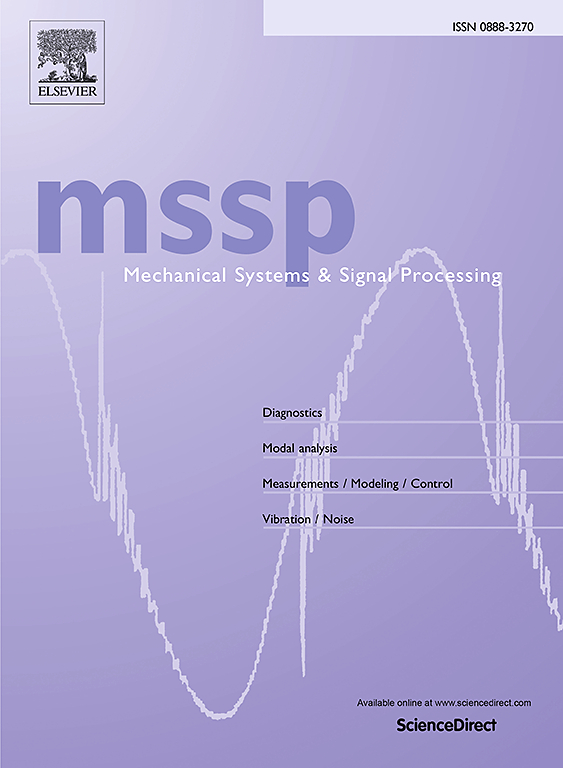A framework for detecting high-performance cardiac arrhythmias using deep inference engine on FPGA and higher-order spectral distribution
IF 8.9
1区 工程技术
Q1 ENGINEERING, MECHANICAL
引用次数: 0
Abstract
Cardiac arrhythmias (CA) are critical health conditions. In such a case, highly accurate detection leads to better management and, therefore, better treatment. Here, this paper presents a novel high-performance detection framework for cardiac arrhythmias based on advanced signal processing algorithms with deep learning on a Field Programmable Gate Array (FPGA) towards achieving real-time performances and even higher accuracy. ECG signals are initially analyzed by using compressive sensing theory to obtain sparsity, and from that, the adaptive compressive sensing framework is created. This compressive sensing framework adapts the sensing matrix step by step through compression via the Hybrid Reptile Search Algorithm integrated with the Garra Rufa Algorithm (Hyb-RSA-GRA). The adapted sensing matrix renders signal reconstruction efficient through Bayesian Regularization-Backpropagation Neural Network (BRBNN). The new arrhythmia detection framework employs the possibility of higher-order spectral distribution (HoSD) in extracting finer patterns from ECGs that describe arrhythmia. The task of classification uses a pre-trained Graph Convolutional Neural Network (GCNN) acting as a Deep Inference Engine on the FPGA to support real-time, robust identification of the type of arrhythmias such as N (normal beat), S (supraventricular ectopic beat), V (ventricular ectopic beat), F (fusion beat), and U (unidentified beat). The proposed FPGA implementation reveals better performance with high accuracy, sensitivity, specificity, precision, recall, and F1-score with optimized power dissipation, resource utilization, and delay metrics. Furthermore, the compressive sensing framework guarantees low MSE, reduced RMSE, high SNR, and an improved reconstruction probability. All the above results demonstrate the capability of the framework in accurate prediction and hardware efficiency, hence making it a robust solution for cardiac arrhythmia detection.
基于FPGA和高阶频谱分布的高性能心律失常检测框架
心律失常(CA)是严重的健康状况。在这种情况下,高度准确的检测可以带来更好的管理,从而更好的治疗。本文提出了一种新的高性能心律失常检测框架,该框架基于现场可编程门阵列(FPGA)上的先进信号处理算法和深度学习,旨在实现实时性能和更高的精度。首先利用压缩感知理论对心电信号进行分析,获得稀疏度,并以此为基础构建自适应压缩感知框架。该压缩感知框架通过混合爬行动物搜索算法(Hybrid Reptile Search Algorithm)和Garra - Rufa算法(Hyb-RSA-GRA)对感知矩阵进行逐级压缩。自适应传感矩阵通过贝叶斯正则化-反向传播神经网络(BRBNN)实现了信号的高效重构。新的心律失常检测框架利用高阶谱分布(HoSD)的可能性从描述心律失常的心电图中提取更精细的模式。分类任务使用预训练的图卷积神经网络(GCNN)作为FPGA上的深度推理引擎,以支持实时、鲁棒地识别心律失常类型,如N(正常心跳)、S(室上异位心跳)、V(室上异位心跳)、F(融合心跳)和U(未识别心跳)。通过优化功耗、资源利用率和延迟指标,该FPGA实现具有更高的准确性、灵敏度、特异性、精密度、召回率和f1分数。此外,压缩感知框架保证了低MSE、降低RMSE、高信噪比和提高重建概率。以上结果证明了该框架在准确预测和硬件效率方面的能力,从而使其成为心律失常检测的鲁棒解决方案。
本文章由计算机程序翻译,如有差异,请以英文原文为准。
求助全文
约1分钟内获得全文
求助全文
来源期刊

Mechanical Systems and Signal Processing
工程技术-工程:机械
CiteScore
14.80
自引率
13.10%
发文量
1183
审稿时长
5.4 months
期刊介绍:
Journal Name: Mechanical Systems and Signal Processing (MSSP)
Interdisciplinary Focus:
Mechanical, Aerospace, and Civil Engineering
Purpose:Reporting scientific advancements of the highest quality
Arising from new techniques in sensing, instrumentation, signal processing, modelling, and control of dynamic systems
 求助内容:
求助内容: 应助结果提醒方式:
应助结果提醒方式:


